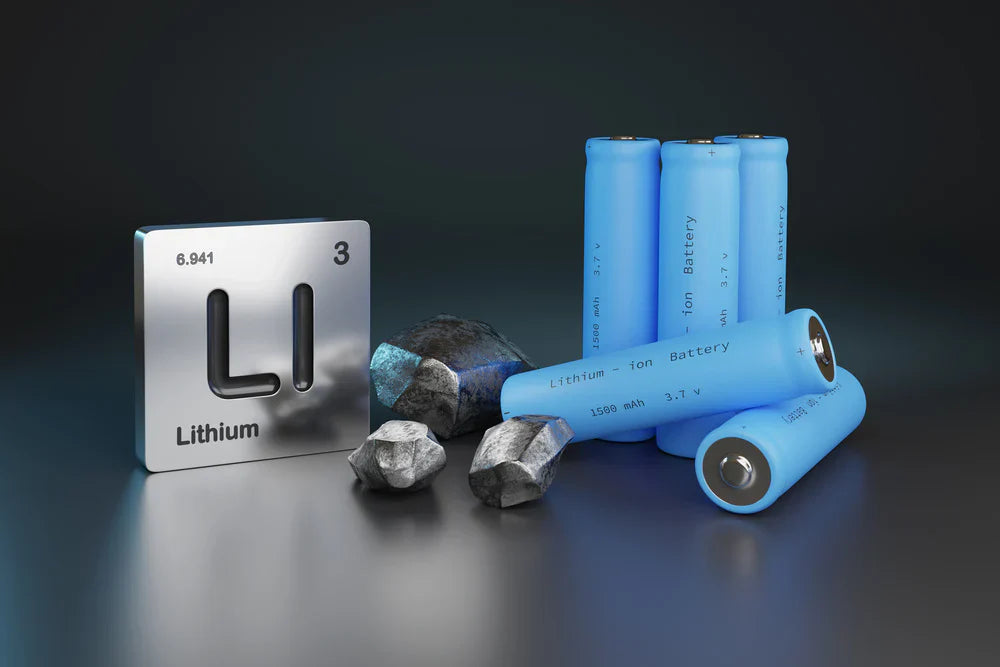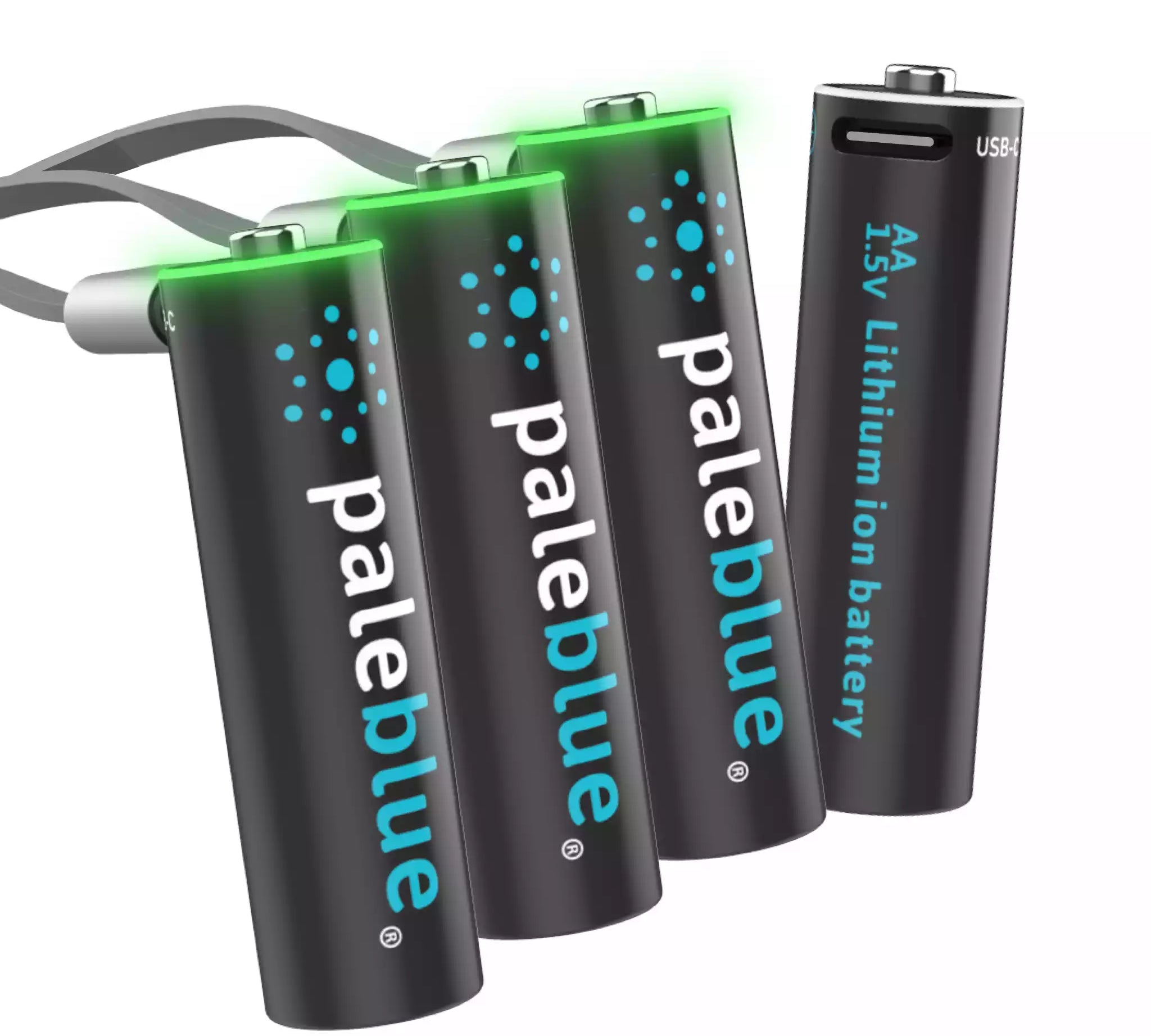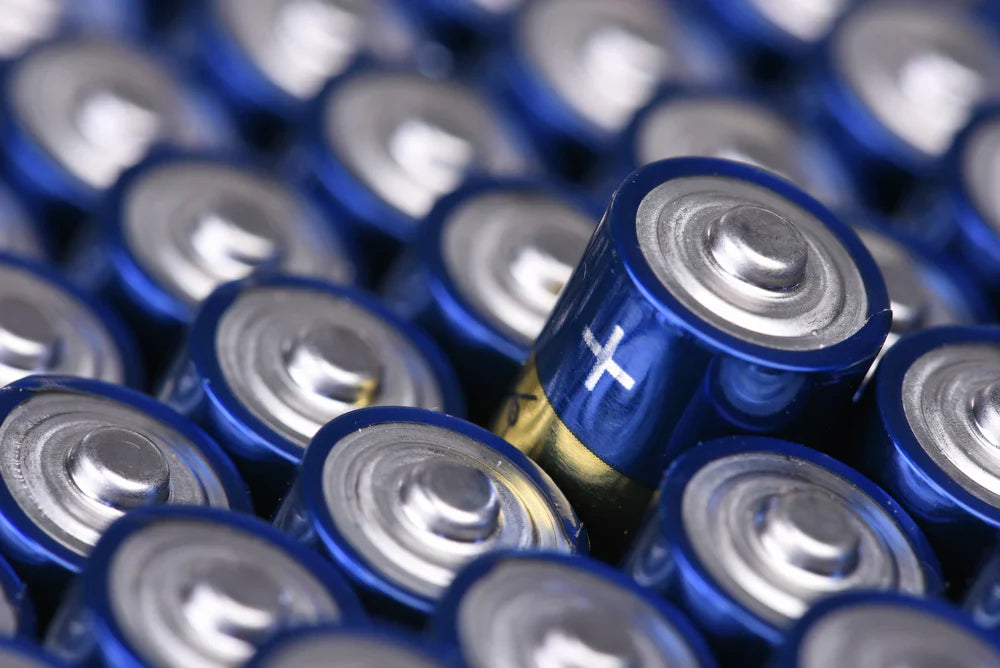3 Reasons to Choose Li-Ion Batteries Over NiMH

Lithium-ion and nickel metal hydride (NiMH) are two of the most popular technologies for consumer batteries. Before lithium-ion was popular, NiMH competed with NiCad batteries for market dominance. But these days, lithium-ion is the clear winner. It is better technology than both other options.
Let us take a look at specifically why we recommend choosing lithium-ion over NiMH batteries. There are basically three reasons dealing with charge cycles, charging time, and output voltage. Grasp these three things and you will understand why we believe our USB-C rechargeable batteries – and lithium-ion batteries in general – are the best choice for most consumer battery applications.
1. Total Charge Cycles
Charge cycles are everything when you are comparing rechargeable batteries to their disposable counterparts. Our customers buy rechargeable batteries specifically for that reason. They want to use them multiple times rather than draining them and immediately throwing them away. So here's the scoop on NiMH batteries: about 500 is the average number of charge cycles a single battery offers.
That many charge cycles is nothing to laugh at. Compared to single-use batteries, an NiMH battery giving you 500 cycles is pretty outstanding. But now, let us compare it to lithium-ion batteries. An average li-ion battery offers up to 1,000 charge cycles. Pale Blue Earth batteries can be charged 1,000+ times. That is twice the charge cycles, which translates into more battery power for less money.
2. Charging Time
Both lithium-ion and NiMH batteries do just fine when you have a day or more to charge them. Provided you aren't in a rush, you can start charging a set of batteries during the day, leave them overnight, and have full cells ready to go in the morning. But when time is of the essence, NiMH cannot compete with lithium-ion.
Lithium-ion batteries have a comparatively shorter charge time. A typical battery can be fully charged in 1-3 hours depending on its size and how far down it was drained prior to charging. NiMH batteries can take twice as long, or even longer, to fully charge.
3. Output Voltage
As much as we prefer that people do not use disposable alkaline batteries at all, one of their strengths is that they provide consistent output voltage from start to finish. There isn't a whole lot of battery fade with alkaline cells. That cannot be said for NiMH batteries. As an NiMH battery ages, its voltage output decreases. So much so that older NiMH batteries may be of no practical use even though they can still hold a charge.
Lithium-ion batteries, on the other hand, are comparable to alkaline cells in this regard. They continue to maintain a consistent voltage output even as they age. You are less likely to experience battery fade in the short term, as well. Instead, you can expect consistent voltage with every use.
The Clear Choice Is Li-Ion
We are not hesitant to say that the clear choice for all your consumer battery needs is lithium-ion technology. Alkaline batteries worked well enough when they were the only game in town. NiCad and NiMH products did the job when rechargeable consumer batteries first hit the market. But all three technologies have seen better days. They all pale in comparison to li-ion.
If you are still using NiMH batteries, you are doing better than those consumers content to continue with disposable alkaline batteries. But you could do better with li-ion. We invite you to try our USB-C rechargeable batteries instead. You might just be surprised by how much better lithium-ion products do compared to your older battery technology.







